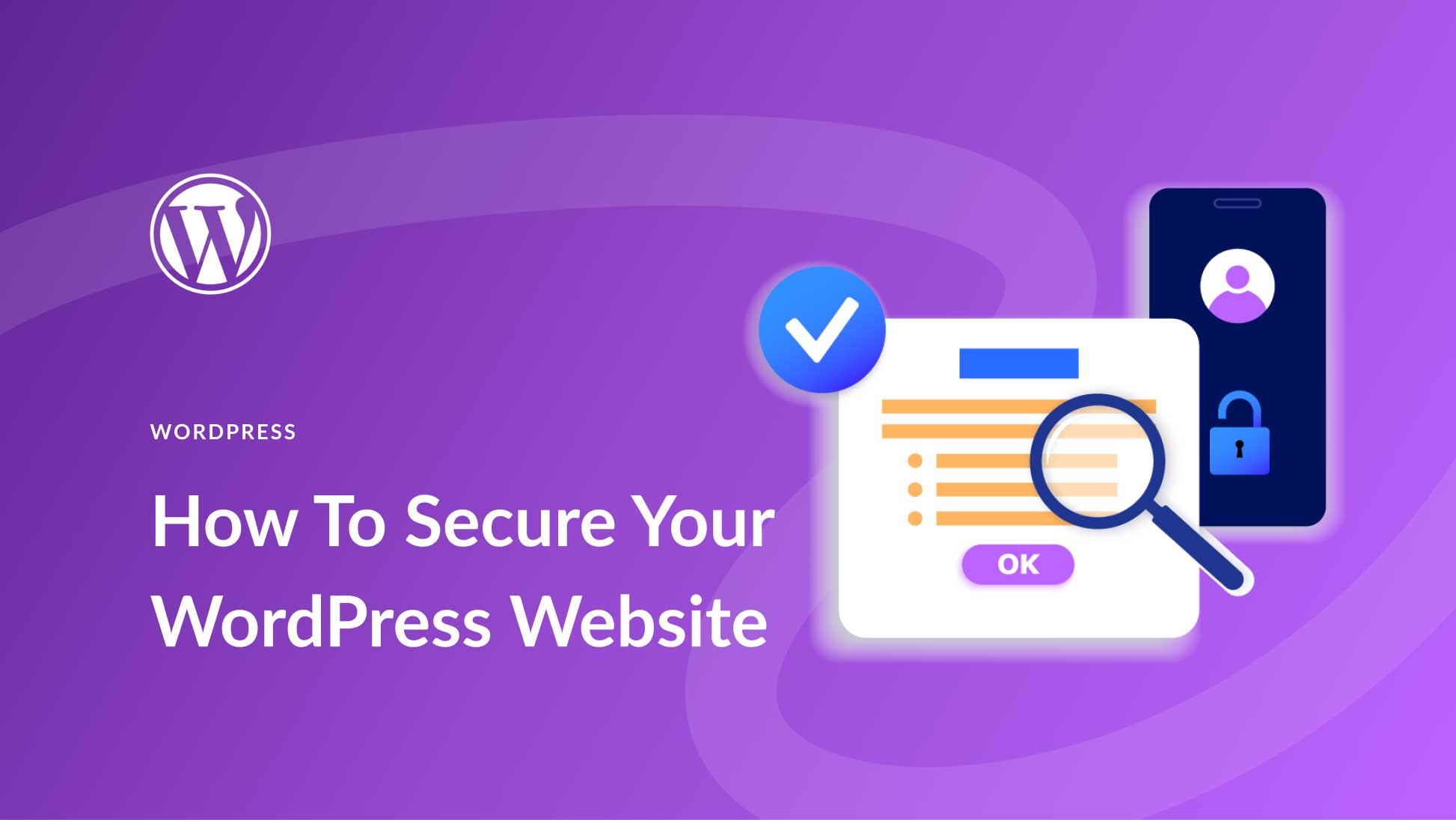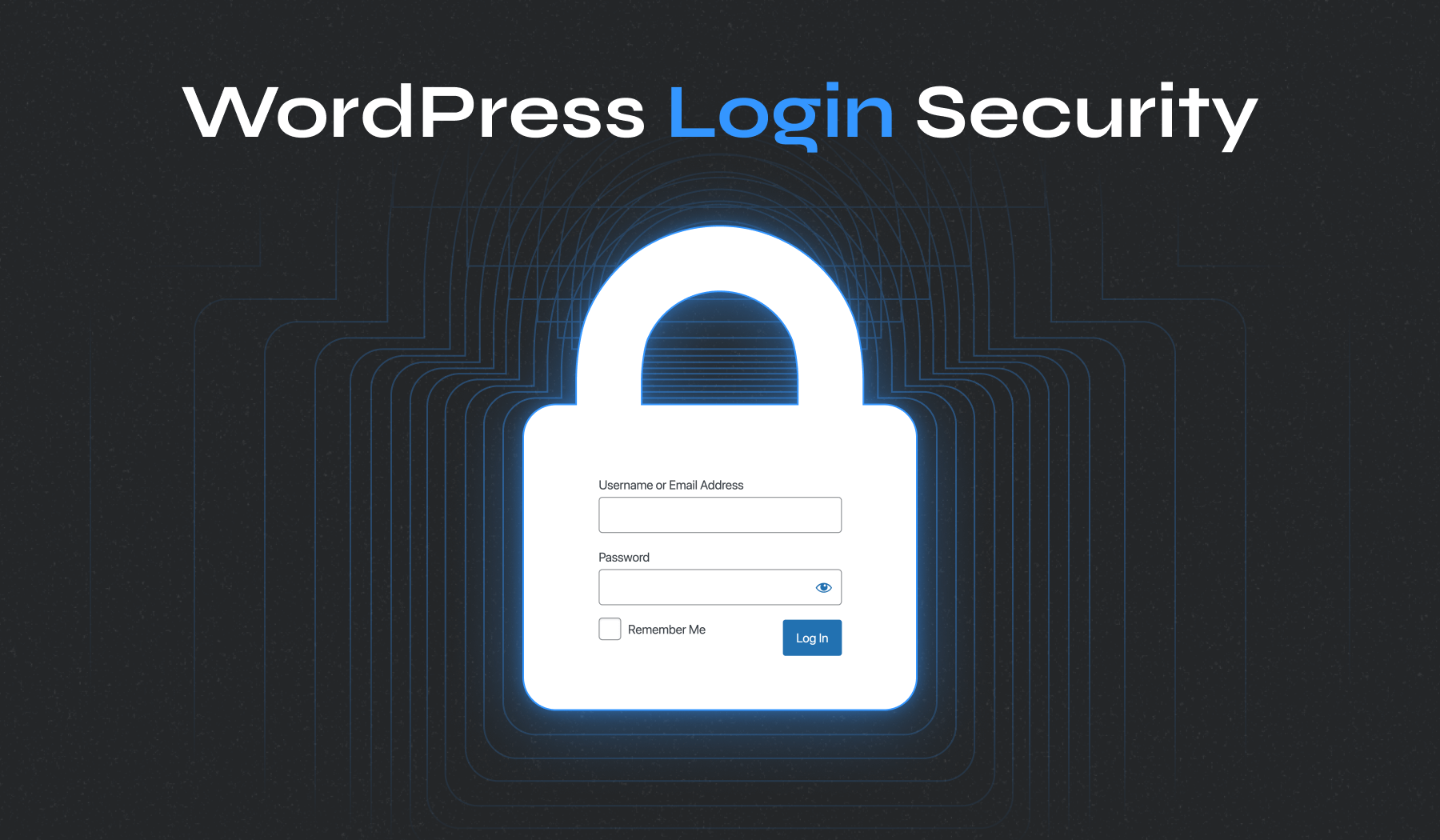To protect your WordPress website, use strong passwords and keep your plugins and themes updated. Regularly back up your site.
WordPress is the most popular content management system, but its popularity makes it a target for hackers. Securing your WordPress site is essential to protect your data and maintain trust with your visitors. Implementing robust security measures can prevent unauthorized access, data breaches, and other cyber threats.
By following some essential tips, you can significantly reduce the risk of your site being compromised. This guide will cover ten crucial WordPress security tips to help you safeguard your website. These practical steps are easy to implement and will enhance your site’s overall security posture.
Secure Hosting
Ensuring your WordPress website is secure starts with choosing the right hosting. A secure host can prevent many security threats. This section will guide you through important steps.
Choosing A Reliable Host
To keep your WordPress site safe, always pick a reliable host. Choose one with strong security features. Look for hosts that offer:
- Regular backups
- 24/7 customer support
- Firewall protection
- Malware scanning
Check reviews and ratings before making a decision. A good host protects your data and keeps your site running smoothly.
Ssl Certificates
SSL Certificates are essential for website security. They encrypt data between your site and its visitors. This keeps information safe from hackers. Google also favors sites with SSL, boosting your SEO.
Here are steps to get an SSL Certificate:
- Choose a hosting plan that includes SSL.
- Activate the SSL Certificate through your hosting dashboard.
- Update your WordPress settings to use HTTPS.
- Verify the SSL is working using online tools.
Many hosts offer free SSL Certificates. Ensure yours is active and visible with a padlock icon in the browser.
Strong Passwords
Ensuring your WordPress site has strong passwords is crucial. Weak passwords make it easy for hackers to breach your site. A strong password is the first step in safeguarding your data and users.
Password Policies
Implementing clear password policies can help your users create secure passwords. Here are some guidelines to consider:
- Passwords should be at least 12 characters long.
- Include a mix of uppercase and lowercase letters.
- Use numbers and special characters.
- Avoid using common words or easily guessable information.
Regularly remind users to update their passwords. Enforce password expiration policies to ensure they change passwords periodically.
Two-factor Authentication
Two-Factor Authentication (2FA) adds an extra layer of security. Even if a hacker cracks the password, they need a second piece of information to access the site. Here’s how you can implement 2FA:
- Install a 2FA plugin from the WordPress repository.
- Configure the plugin settings according to your needs.
- Encourage users to set up 2FA for their accounts.
Popular 2FA methods include SMS codes, authentication apps, and email verification. Using 2FA significantly reduces the risk of unauthorized access.
Regular Updates
Regular updates are vital for the security of your WordPress website. Keeping your site updated can prevent vulnerabilities and protect against threats. Let’s break down the importance of regular updates with a focus on Core Updates and Plugin and Theme Updates.
Core Updates
WordPress core updates are crucial for security. These updates often include security patches and bug fixes. Ignoring core updates can leave your site vulnerable to attacks. Ensure your site is always running the latest WordPress version.
Plugin And Theme Updates
Plugins and themes are essential for your site’s functionality and design. They need regular updates to fix security flaws. An outdated plugin or theme can be a gateway for hackers. Always update your plugins and themes to the latest versions.
| Update Type | Importance |
|---|---|
| Core Updates | High |
| Plugin Updates | Medium |
| Theme Updates | Medium |
- Regular updates help in preventing security breaches.
- Always backup your site before updating.
- Enable automatic updates for core, plugins, and themes.
By following these tips, you can ensure your WordPress site remains secure and up-to-date. Regular updates are a simple yet effective way to safeguard your website.

Backup Solutions
Keeping your WordPress website secure is crucial. One key aspect is having reliable Backup Solutions. Backups ensure you can restore your site quickly if anything goes wrong. Below are essential tips on automated and manual backup strategies.
Automated Backups
Automated backups save time and reduce errors. Here are some popular plugins:
- UpdraftPlus: This plugin offers scheduled backups. It supports cloud storage options like Google Drive and Dropbox.
- BackupBuddy: Create complete backups of your site. It also includes a built-in migration tool.
- VaultPress: This plugin provides real-time backups. It’s part of the Jetpack suite.
To set up automated backups, follow these steps:
- Install your chosen plugin.
- Configure the backup schedule.
- Select your preferred storage location.
- Test the backup to ensure it works.
Manual Backup Strategies
Manual backups are a good secondary option. They give you control over the backup process.
Follow these steps for a manual backup:
- Log in to your hosting account.
- Access the File Manager or use FTP.
- Download the wp-content folder.
- Export the database using phpMyAdmin.
Store the backups in multiple locations. Use external hard drives or cloud storage for safekeeping.
Here is a comparison table of backup methods:
| Method | Pros | Cons |
|---|---|---|
| Automated Backups | Time-saving, less error-prone | May require plugins or subscriptions |
| Manual Backups | Full control, no extra cost | Time-consuming, risk of human error |
Limit Login Attempts
Protecting your WordPress site is crucial. One effective method is to limit login attempts. Hackers often use brute force attacks to guess your login credentials. By limiting login attempts, you reduce the risk of unauthorized access. This strategy helps keep your website safe.
Login Lockdown Plugins
Using login lockdown plugins can help secure your site. These plugins monitor and limit login attempts. If someone fails to log in multiple times, the plugin temporarily blocks their IP address.
Some popular plugins include:
- Login LockDown: Tracks IP addresses and logs failed login attempts.
- Limit Login Attempts Reloaded: Allows you to customize the limit and block duration.
- WP Limit Login Attempts: Provides detailed logs and notifications.
These plugins are easy to install and configure. They add an extra layer of protection to your WordPress site.
Custom Login Urls
Changing your login URL is another effective method. The default WordPress login URL is easy for hackers to find. By creating a custom login URL, you make it harder for attackers to access your login page.
Follow these steps to create a custom login URL:
- Install a plugin like WPS Hide Login.
- Activate the plugin and go to the settings page.
- Enter your desired custom login URL.
- Save the changes.
Now, your login page is more secure. Only those who know the new URL can attempt to log in.
Using these two methods, you can significantly enhance your WordPress security. Limiting login attempts and creating custom login URLs are simple yet effective strategies. Implement them today to protect your website.

User Roles
Managing User Roles effectively is crucial for WordPress security. User roles determine what users can and cannot do on your site. Properly managing these roles helps protect your website from unauthorized access and potential threats.
Role Management
Role management involves assigning users specific roles based on their responsibilities. WordPress has predefined roles, such as:
- Administrator: Full access to site management.
- Editor: Can publish and manage posts.
- Author: Can write and publish their own posts.
- Contributor: Can write but not publish posts.
- Subscriber: Can only manage their profile.
Assign roles carefully to minimize risks. Only give high-level access to trusted individuals.
Least Privilege Principle
The Least Privilege Principle means giving users the minimum level of access necessary. This reduces the chance of unauthorized actions. Follow these steps to implement this principle:
- Identify the tasks each user needs to perform.
- Assign the lowest role that allows them to complete those tasks.
- Regularly review and adjust roles as needed.
For example, if a user only needs to write posts, assign them the Author role instead of Administrator.
Using the Least Privilege Principle strengthens your website’s security. It limits potential damage from compromised accounts.
Firewall Protection
Protecting your WordPress website with a firewall is crucial. Firewalls act as a barrier between your site and potential threats. They monitor and filter incoming traffic to block harmful requests. Effective firewall protection can prevent hacking, malware, and other security breaches.
Web Application Firewalls
A Web Application Firewall (WAF) is essential for your website’s security. It filters and monitors HTTP traffic between a web application and the Internet. WAFs can block various attacks, including SQL injection, cross-site scripting (XSS), and more. They provide an additional layer of protection by scrutinizing incoming traffic.
- Enhanced Security: WAFs offer advanced threat detection and prevention.
- Customization: You can tailor WAF rules to suit your website’s needs.
- Real-Time Monitoring: WAFs provide real-time insights into potential threats.
Popular WAF services include:
- Cloudflare: Known for its robust security features.
- Sucuri: Offers comprehensive website protection.
- Imperva: Provides enterprise-level security solutions.
Plugin-based Firewalls
Plugin-based firewalls are a simple way to protect your WordPress site. They are easy to install and configure. These plugins offer a variety of security features to safeguard your website.
| Plugin | Features |
|---|---|
| Wordfence | Real-time threat defense, malware scanning, and login security. |
| All In One WP Security & Firewall | Brute force attack prevention, file integrity monitoring, and more. |
| iThemes Security | Two-factor authentication, database backups, and strong password enforcement. |
These plugins enhance your website’s security without requiring technical expertise. They offer user-friendly interfaces and detailed documentation. Ensure you keep these plugins updated to benefit from the latest security features.

Security Plugins
One of the best ways to protect your WordPress website is by using security plugins. These plugins offer various features to defend your site against threats. They are easy to install and configure, even for beginners.
Top Security Plugins
Here are some of the top security plugins for WordPress:
| Plugin Name | Key Features |
|---|---|
| Wordfence Security | Firewall, malware scan, live traffic monitoring |
| iThemes Security | Two-factor authentication, brute force protection, file change detection |
| Sucuri Security | Security activity auditing, remote malware scanning, blacklist monitoring |
| All In One WP Security & Firewall | Login lockdown, file integrity monitoring, database security |
Configuration Tips
After installing a security plugin, proper configuration is crucial. Here are some tips:
- Enable Firewall: This blocks malicious traffic before it reaches your site.
- Activate Malware Scanning: Regularly scan your site for any malware.
- Use Two-Factor Authentication: Add an extra layer of security to your login page.
- Set Up Login Limitations: Limit login attempts to protect against brute force attacks.
- Monitor File Changes: Receive alerts for any unauthorized changes to your files.
These tips ensure your security plugin works effectively.
Malware Scanning
Malware scanning is crucial for your WordPress website’s security. Regular scans help detect threats early. Timely removal keeps your website safe and clean. This section covers essential tips for effective malware scanning.
Regular Scans
Regular scans are vital for detecting malware. Schedule scans weekly to ensure your site is clean. Use trusted plugins like Wordfence or Sucuri for comprehensive scans. These plugins offer robust features to identify and eliminate threats.
Automate your scans for convenience. Automated scans ensure that no malware goes unnoticed. Review scan reports carefully to understand the nature of detected threats.
Removal Tools
Effective removal tools are crucial for malware elimination. Plugins like MalCare or Anti-Malware Security can remove detected threats easily. These tools offer one-click removal options for simplicity.
Keep your removal tools updated. Updated tools have the latest malware definitions. This ensures they can handle new threats efficiently.
Consider professional help if needed. Sometimes, manual removal is complex. Experts can ensure thorough cleaning and security.
| Plugin | Features |
|---|---|
| Wordfence | Comprehensive scanning, firewall protection, real-time updates |
| Sucuri | Site monitoring, malware removal, performance optimization |
| MalCare | One-click removal, deep scanning, real-time alerts |
Regular scans and effective removal tools are the backbone of WordPress security. Keep your website safe with these essential tips.
Database Security
Securing your WordPress database is crucial to protect your website from threats. The database stores all your important data. This includes posts, comments, and user information. By securing your database, you make it harder for hackers to access and exploit it.
Changing Table Prefixes
By default, WordPress uses “wp_” as a prefix for all database tables. Hackers know this default setting. Changing the table prefix can add an extra layer of security. Follow these steps to change the table prefix:
- Open your
wp-config.phpfile. - Find the line that says
$table_prefix = 'wp_'; - Change the prefix to something unique, like
$table_prefix = 'abc123_'; - Update your database tables with the new prefix using a plugin or SQL commands.
Changing the table prefixes makes it harder for hackers to predict your database structure.
Securing Wp-config.php
The wp-config.php file is one of the most important files in your WordPress installation. It contains database connection details. Securing this file is critical. Here are some tips to secure wp-config.php:
- Move the file: Move
wp-config.phpone level above the WordPress root directory. - File permissions: Set the file permissions to
400or440. - Prevent access: Add the following code to your
.htaccessfile to prevent access:order allow,deny deny from all
Securing wp-config.php helps protect your database credentials and other important settings.
Frequently Asked Questions
How Can I Secure My WordPress Login Page?
You can secure your WordPress login page by using a strong password, enabling two-factor authentication, and limiting login attempts. Regularly updating your security plugins can also help.
What Are The Best Security Plugins For WordPress?
Some of the best security plugins for WordPress include Wordfence, Sucuri, and iThemes Security. They offer comprehensive protection, including firewall, malware scanning, and login security features.
How Do I Keep My WordPress Site Updated?
To keep your WordPress site updated, enable automatic updates for core files, themes, and plugins. Regularly check for updates in your dashboard to ensure all components are up-to-date.
Why Is Https Important For WordPress Security?
HTTPS encrypts data between your website and its visitors, protecting sensitive information. It also boosts your site’s SEO ranking and builds trust with users.
Conclusion
Protecting your WordPress site is crucial for its success. By following these 10 essential tips, you can safeguard your website from threats. Stay proactive with regular updates and backups. Implement strong passwords and security plugins. Your website’s security ensures a safe experience for your visitors.
Keep your WordPress site secure and enjoy peace of mind.
